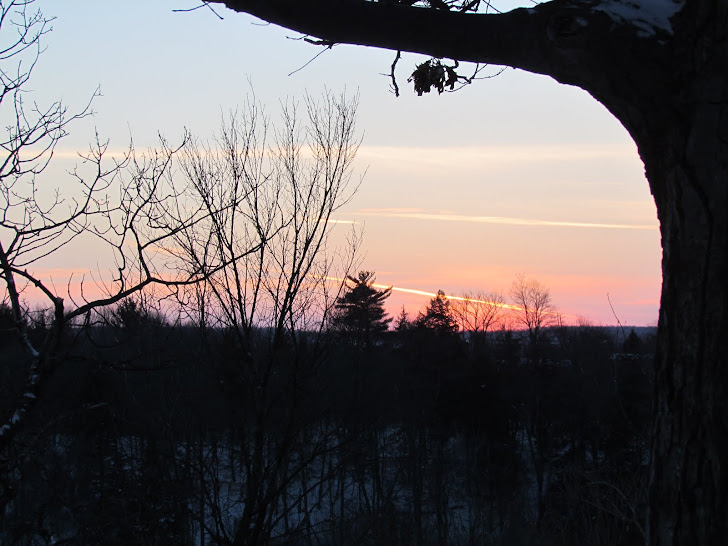Boxelder Bugs:
(Boisea trivittata) These bugs feed on the seeds and stems of boxelder and other maple trees. They are harmless to landscape plants. There is usually one generation per year, and the adults (and sometimes large nymphs) overwinter in masses in protected locations around the outside of structures. Sometimes adults will enter houses in small to large numbers.They can find their way in through any cracks or crevices in the home's exterior. They are completely harmless, even in large numbers. They do not bite but may stain fabric and carpet if crushed. If they're in your home, the best way to get rid of them is to vacuum them up.
 We would usually see these bugs cover the south side of our house on a sunny day, starting in early Spring when the weather warms up. They likely would congregate for warmth behind the wood siding for the winter. Since we removed all the siding this past summer, and haven't replaced it yet, and we chopped down the Manitoba Maple that grew beside the house in October, the boxelder bugs easily found their way into the house. If you want to keep these bugs out of your house, make sure to seal any obvious cracks in your foundation, and check for openings around doors and windows. Repair or replace broken window screens.
We would usually see these bugs cover the south side of our house on a sunny day, starting in early Spring when the weather warms up. They likely would congregate for warmth behind the wood siding for the winter. Since we removed all the siding this past summer, and haven't replaced it yet, and we chopped down the Manitoba Maple that grew beside the house in October, the boxelder bugs easily found their way into the house. If you want to keep these bugs out of your house, make sure to seal any obvious cracks in your foundation, and check for openings around doors and windows. Repair or replace broken window screens. Ladybugs:
 Ladybugs, or ladybird beetles, are recognized as beneficial insects, eating large numbers of aphids and other small, sap-sucking insects, as well as pollen. Farmers value most species of ladybug adults and larvae since they eat a variety of plant-damaging insects, including aphids. Ladybugs protect themselves against predators with their brightly coloured bodies (warning potential predators that it is poisonous, even though it is not), by secreting a bad tasting (and bad smelling) fluid when attacked, and by playing dead (they pretend they are dead until the danger passes).
Ladybugs, or ladybird beetles, are recognized as beneficial insects, eating large numbers of aphids and other small, sap-sucking insects, as well as pollen. Farmers value most species of ladybug adults and larvae since they eat a variety of plant-damaging insects, including aphids. Ladybugs protect themselves against predators with their brightly coloured bodies (warning potential predators that it is poisonous, even though it is not), by secreting a bad tasting (and bad smelling) fluid when attacked, and by playing dead (they pretend they are dead until the danger passes).
They prefer the sunny sides of buildings, where they will crawl around until they find cracks or small openings, including window and door frames, garages doors and outbuildings, soffits, siding and shingles. They may accidentally find their way inside homes, and if they do it's best to ignore them or return them to the outdoors. They are looking for cool and sheltered places to hibernate. They cannot survive for long inside houses because suitable food is not available, and our houses are usually too dry for them in the winter.
The ladybugs in our home like to spend their time in our bathroom, where it is more humid. I've caught several hanging out in the sink, on the faucet and even trying to take a drink in the toilet (they do swim for a while, but eventually drown). I was vacuuming up at least 10 ladybugs a day, but since I did some research on ladybugs, I've decided to let them be. In so doing, I have found that the ladybug population in the house has remained steady at 6-10 bugs (when a couple die, a couple more show up), and several die each day on their own (from dehydration, or by drowning in the toilet). Hopefully next year, we'll have our house will be properly sealed to keep the bugs out.
I've read that you can keep ladybugs as pets, so perhaps I'll give the kids a project to do until Spring, when we can let put them safely back outside to do their job of controlling the aphid population.

